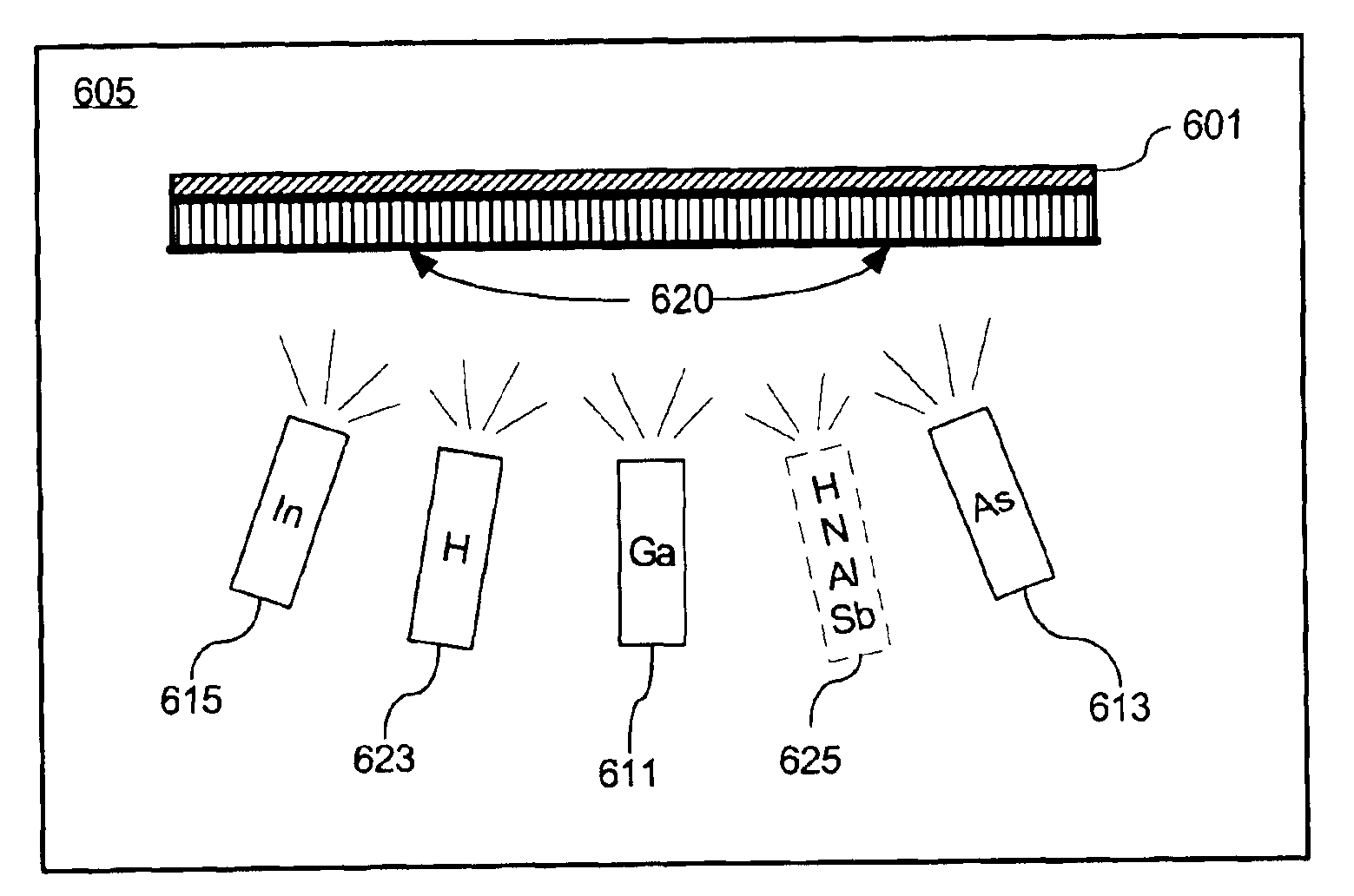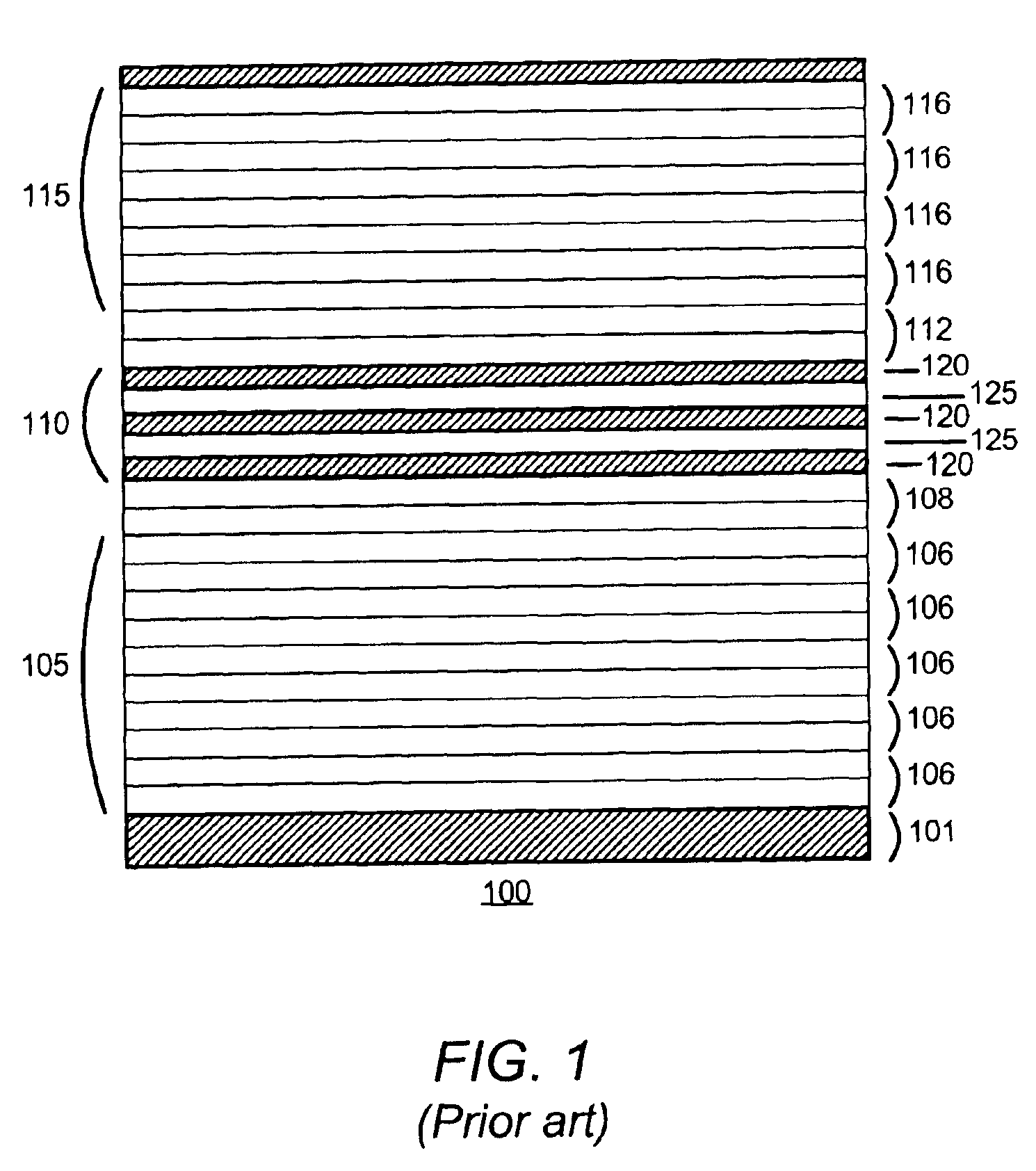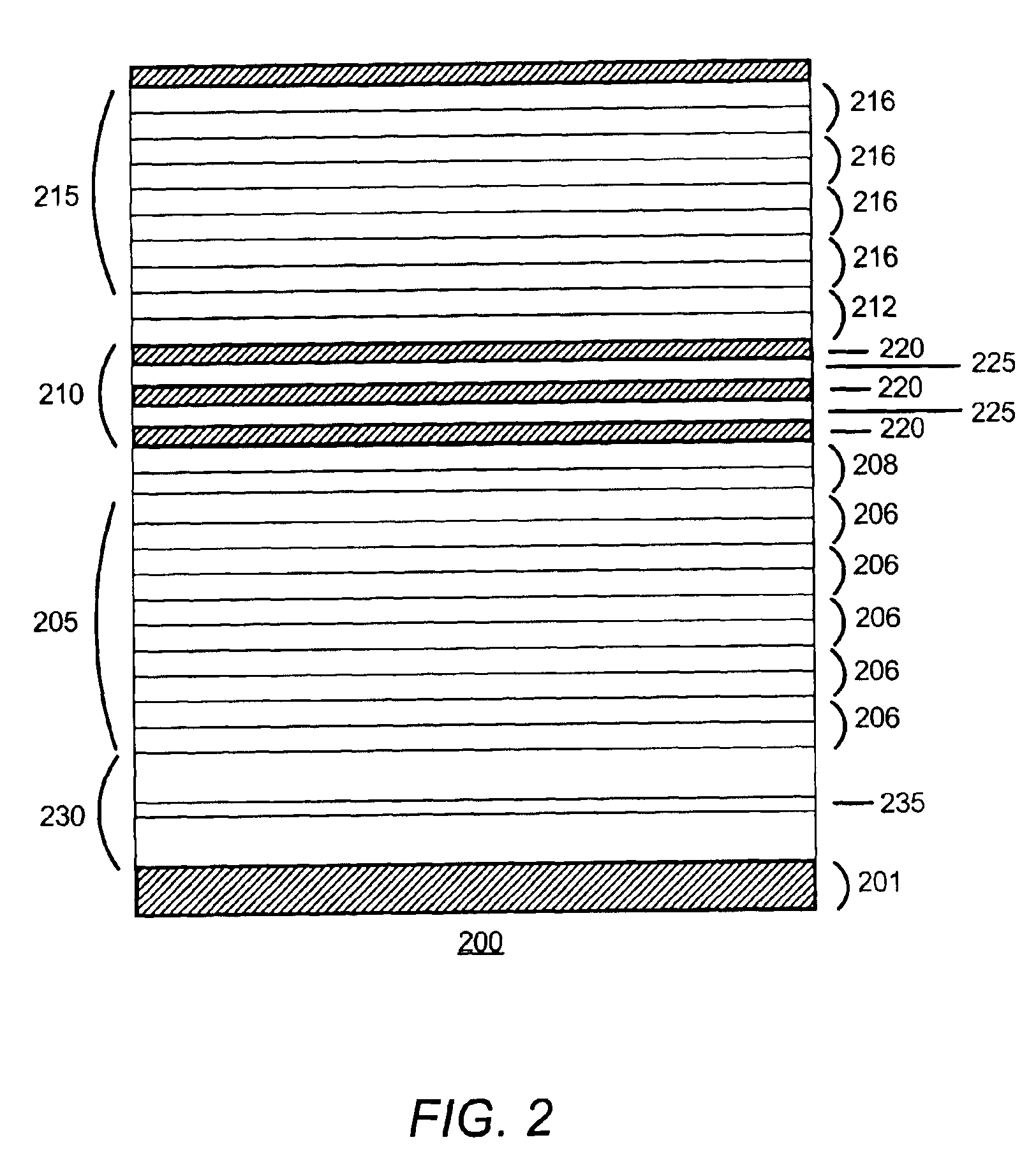Atomic hydrogen as a surfactant in production of highly strained InGaAs, InGaAsN, InGaAsNSb, and/or GaAsNSb quantum wells
a technology of atomic hydrogen and surfactant, which is applied in the field of vertical cavity surface emitting lasers, can solve the problems of strain in the quantum well, inability to test edge emitting lasers, and difficult efficient collection of emitted beams, and achieves the effects of preventing the phase separation of nitrogen compounds, excellent quality materials, and high nitrogen concentration
- Summary
- Abstract
- Description
- Claims
- Application Information
AI Technical Summary
Benefits of technology
Problems solved by technology
Method used
Image
Examples
Embodiment Construction
The novel features of the present invention will become apparent to those of skill in the art upon examination of the following detailed description of the invention or can be learned by practice of the present invention. It should be understood, however, that the detailed description of the invention and the specific examples presented, while indicating certain embodiments of the present invention, are provided for illustration purposes only because various changes and modifications within the scope of the invention will become apparent to those of skill in the art from the detailed description of the invention and claims that follow.
Fabrication of long wavelength quantum wells on GaAs substrates has proven to be very difficult, but the present invention allows for longer wavelength quantum wells and higher efficiency VCSELs to be feasible. One issue experienced in fabricating VCSELs is that long wavelength compounds tend not to be lattice matched to GaAs. This has been alleviated ...
PUM
 Login to View More
Login to View More Abstract
Description
Claims
Application Information
 Login to View More
Login to View More - R&D
- Intellectual Property
- Life Sciences
- Materials
- Tech Scout
- Unparalleled Data Quality
- Higher Quality Content
- 60% Fewer Hallucinations
Browse by: Latest US Patents, China's latest patents, Technical Efficacy Thesaurus, Application Domain, Technology Topic, Popular Technical Reports.
© 2025 PatSnap. All rights reserved.Legal|Privacy policy|Modern Slavery Act Transparency Statement|Sitemap|About US| Contact US: help@patsnap.com



